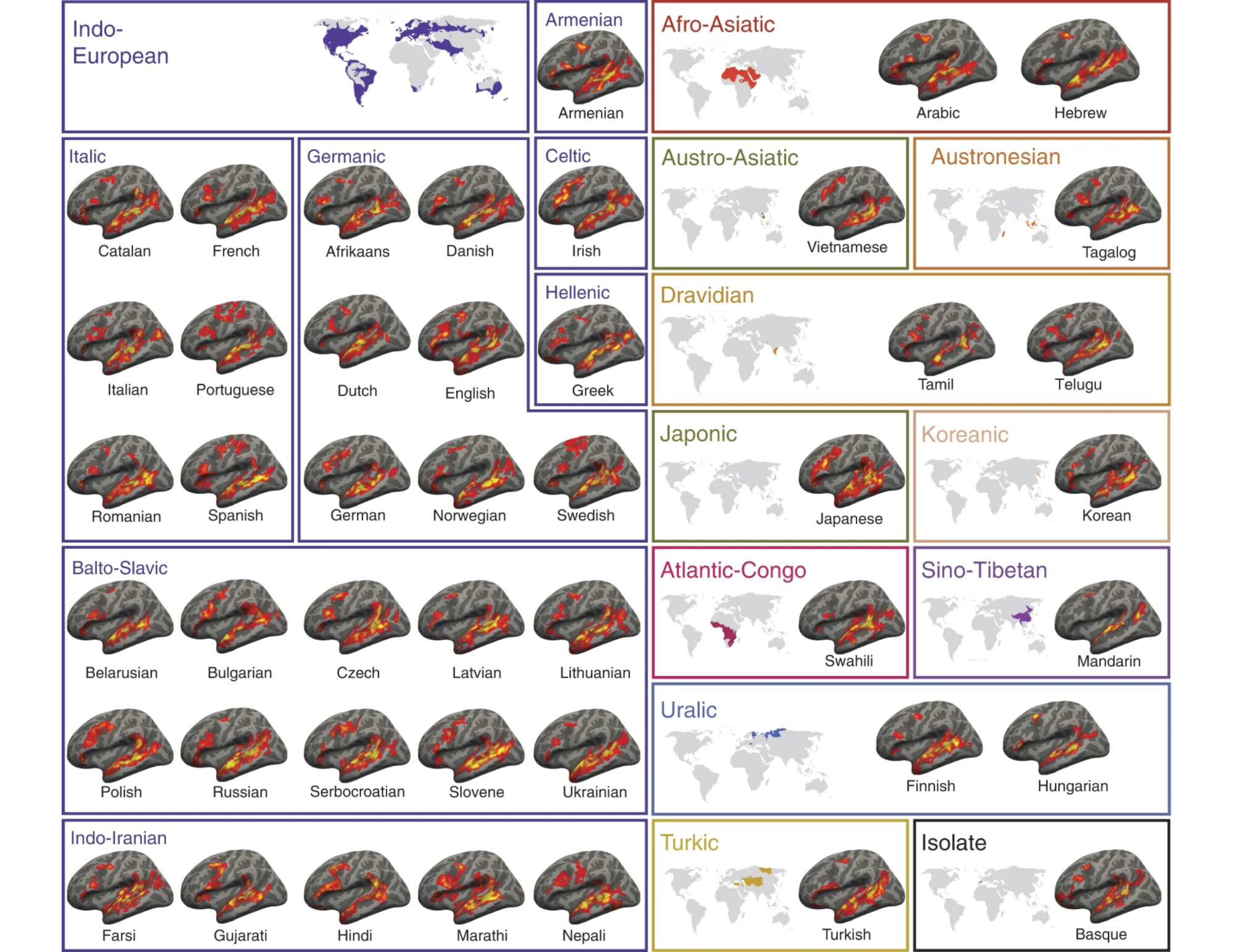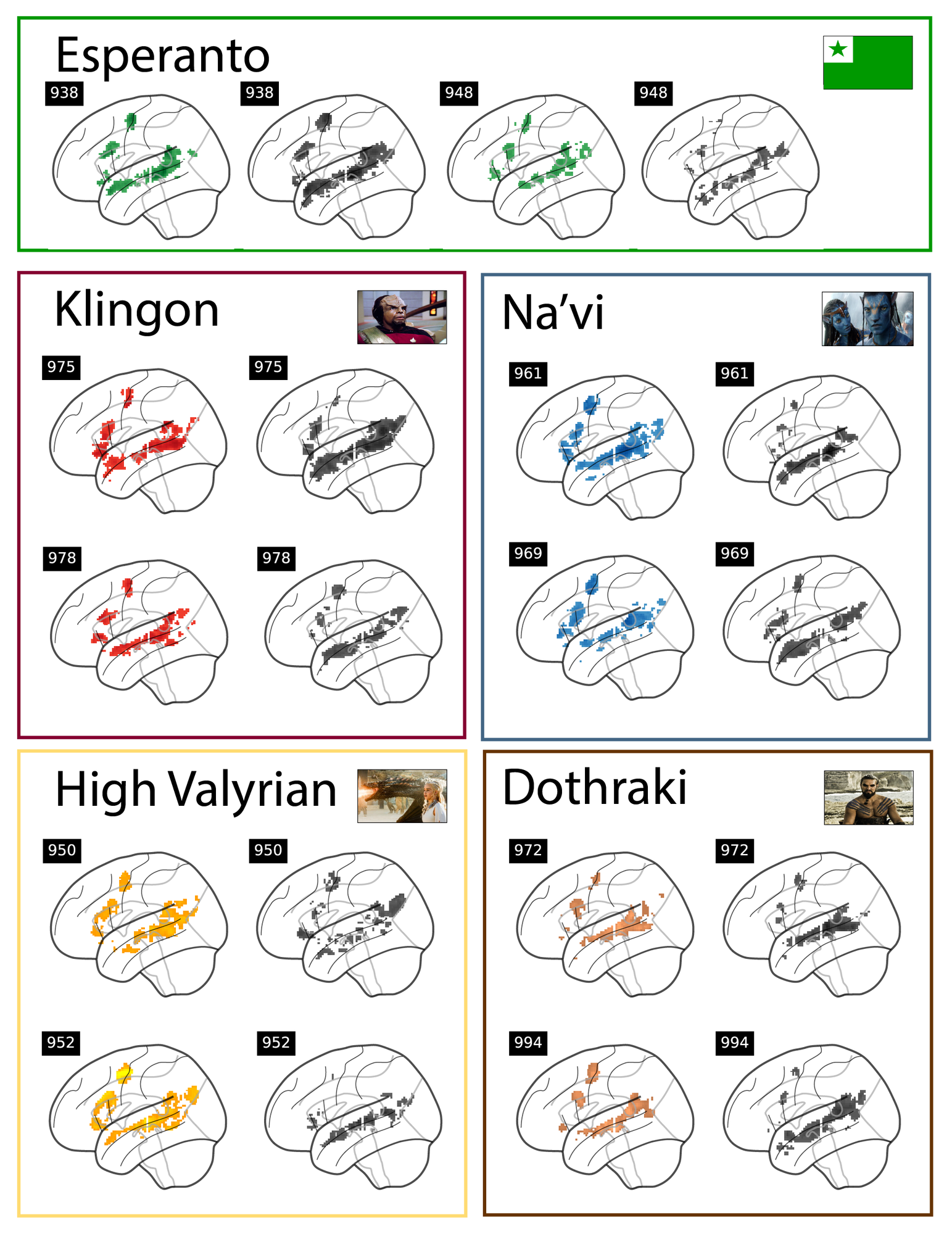What constitutes a language? Natural languages share some features with other domains: from math, to music, to gesture. However, the brain mechanisms that process linguistic input are highly specialized, showing little or no response to diverse non-linguistic tasks. Here, we examine constructed languages (conlangs) to ask whether they draw on the same neural mechanisms as natural languages, or whether they instead pattern with domains like math and logic. Using individual-subject fMRI analyses, we show that understanding conlangs recruits the same brain areas as natural language comprehension. This result holds for Esperanto (n=19 speakers)— created to resemble natural languages—and fictional conlangs (Klingon (n=10), Na’vi (n=9), High Valyrian (n=3), and Dothraki (n=3)), created to differ from natural languages, and suggests that conlangs and natural languages share critical features and that the notable differences between conlangs and natural language are not consequential for the cognitive and neural mechanisms that they engage.
About Me
I am a PhD candidate in the Speech and Hearing Bioscience and Technology program at Harvard University, where I work under the supervision of Ev Fedorenko and Edward Gibson. I am interested in understanding cross-linguistic language processing both between speakers – i.e., comparing how different languages are processed in the brain – as well as within speakers – i.e., comparing how a bilingual speaker processes their two different languages. I seek to explore these questions using robust neuroimaging methods and diverse languages and speakers, moving towards studies that are more representative of the world population.
I am also co-chair of the mentoring program at the Harvard Graduate Women in Science and Engineering (HGWISE). If you are a researcher living around the Greater Boston area and are interested in mentoring with us, please reach out!



